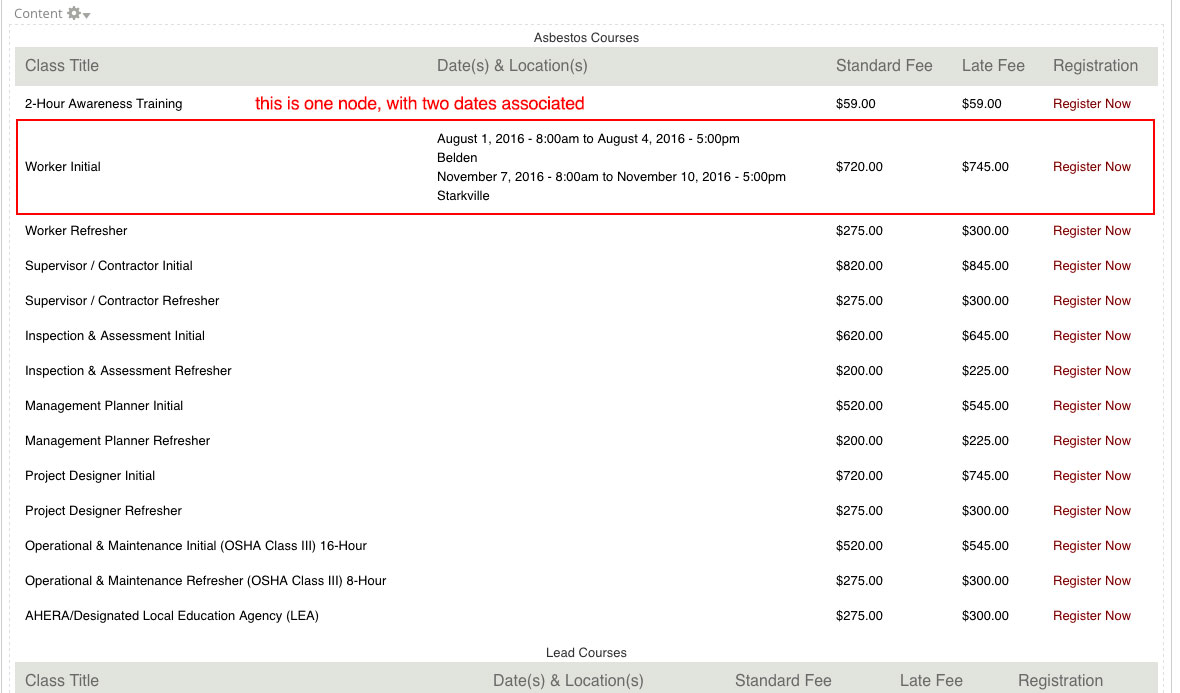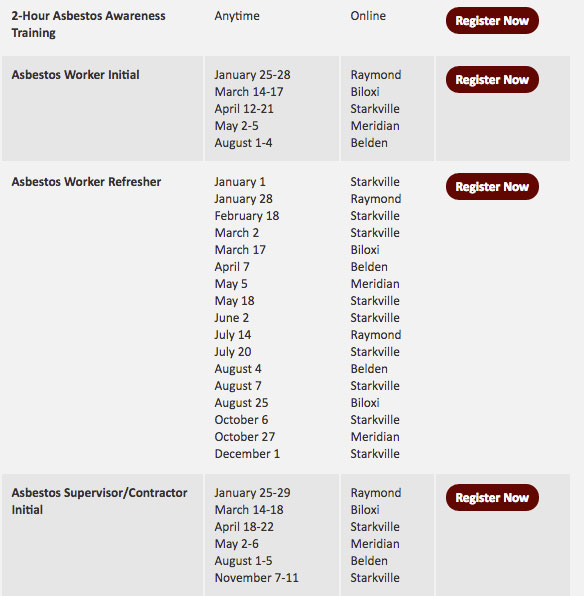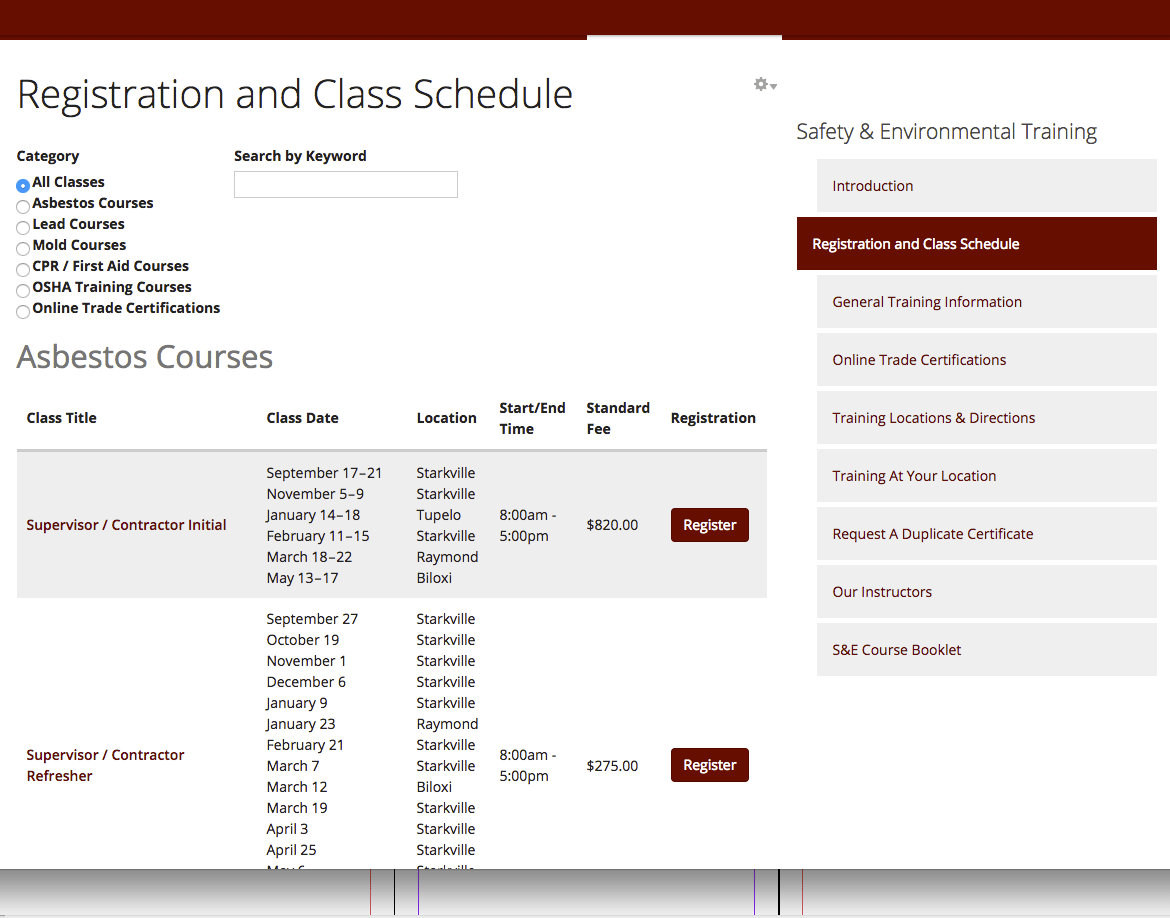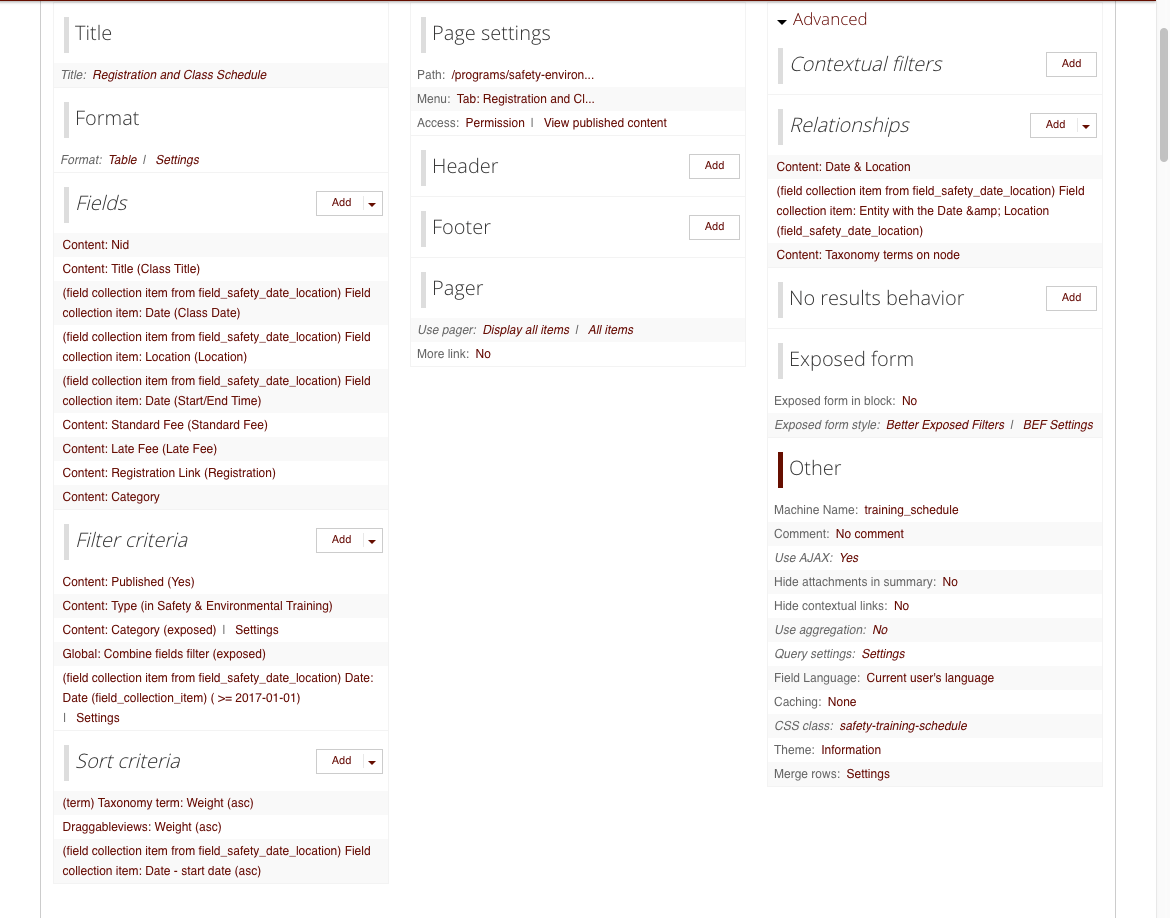I have a Content Type called "Safety Training". It has various fields within it, including a Field Collection named "Dates & Locations", set to unlimited values so they can add infinite date/location pairs.
The two fields defined within the Field Collection are Date (a date ISO field with the ability to enter start/end date and times) and Location (taxonomy). The Date and Location fields are both only single value.
I have a Views page, where I am outputting the individual nodes and grouping them by category of Course Type. This is the format I need the Views table in (from the old site, static HTML):
This is what I have right now in Views (this is in the preview):

How can I separate the date, time, and location into individual table columns called "Class Date", "Location", and "Start/End Time" that will group them like in the old site?
I tried creating a Relationship, choosing "Content: Dates & Locations (field_safety_date_location)", but this immediately creates a duplicate of each item (so there's two Worker Initials, because there's two dates?).
This is the SQL query Views displays:
SELECT node.title AS node_title, node.nid AS nid, draggableviews_structure.weight AS draggableviews_structure_weight, 'node' AS field_data_field_safety_date_location_node_entity_type, 'node' AS field_data_field_safety_standard_fee_node_entity_type, 'node' AS field_data_field_safety_late_fee_node_entity_type, 'node' AS field_data_field_registration_link_node_entity_type, 'node' AS field_data_field_safety_category_node_entity_type
FROM
{node} node
LEFT JOIN {draggableviews_structure} draggableviews_structure ON node.nid = draggableviews_structure.entity_id AND draggableviews_structure.view_name = 'safety_environmental_training_schedule_and_fees' AND draggableviews_structure.view_display = 'page_1' AND draggableviews_structure.args = '[]'
WHERE (( (node.status = '1') AND (node.type IN ('safety_environmental_training')) ))
ORDER BY draggableviews_structure_weight ASC
If anyone has any idea, please help! Thank you.



